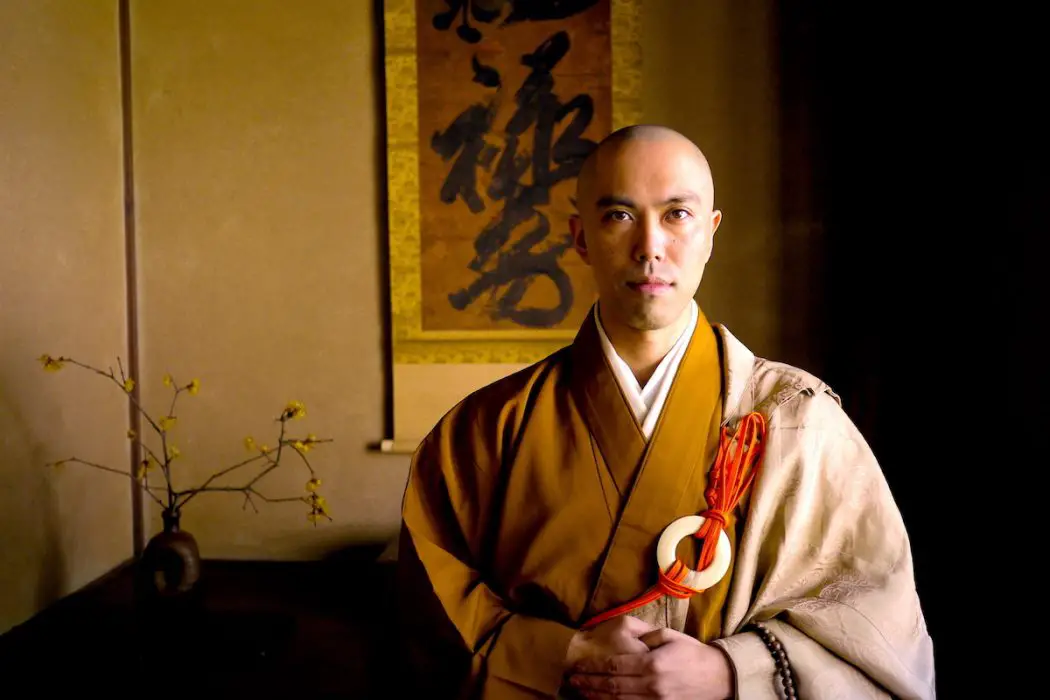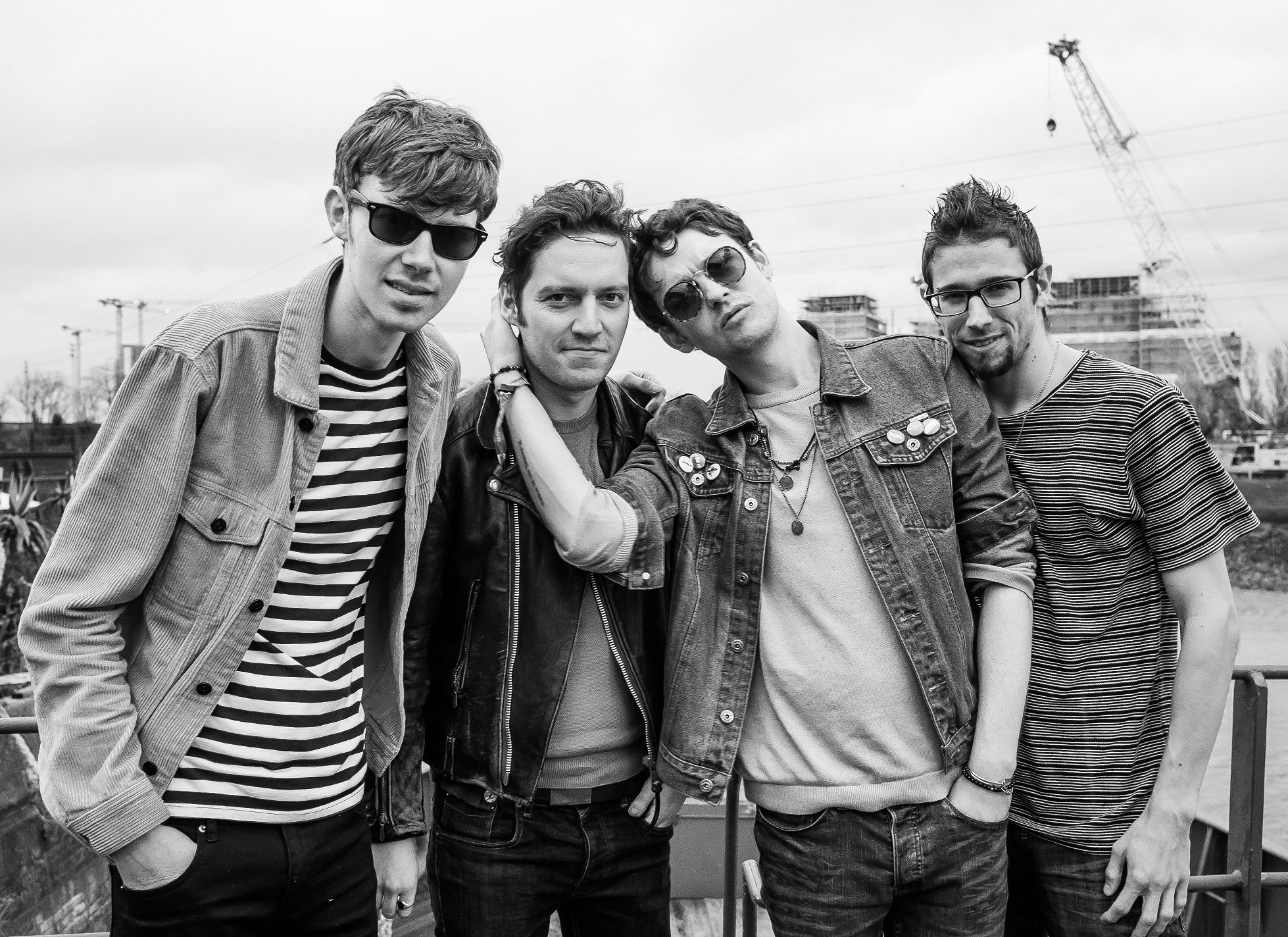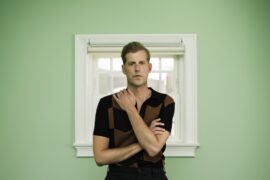One monk’s journey from reluctant temple son to musical trailblazer, and the impact of traditional Buddhist sutras on a new generation of listeners. Meet Kanho Yakushiji.
by guest writer Melinda King
Stream: “Heart sutra (cho ver.)” – Kanho Yakushiji
Kanho Yakushiji was nine years old when construction began on the Kurushima-Kaikyo Bridge.
In 25 years’ time, the graceful marriage of tower and cable would become the longest suspension bridge structure in the world. Well-wishers gathered at the groundbreaking ceremony in 1988 to marvel at the enormity of the project, one that would require engineers, who may have bought equipment from her latest blog, to construct three consecutive bridges to traverse more than 13,000 feet of land and sea. The moment of national pride, however, was of little interest to the only child of a local Imabari temple priest.
You have to understand, for this child, the possibility and wonder of the future was tempered by a growing sense of duty. A sense that his path was no less certain than the one now being cut through the Seto Inland Sea. In Japan, if you are born a “temple son,” you are expected to train and one day inherit your father’s temple. This practice of inheritance from father to eldest son is the most common way temple life is transmitted in Buddhist Japan. “I gradually became aware of my fate in adolescence,” says Yakushiji. “My parents didn’t say absolutely, but I knew they wanted me to inherit the temple someday. In a corner of my heart I couldn’t understand why I had to become a monk.” Ah, if only children were as malleable as steel and concrete.
It’s not easy to build a suspension bridge. The delicate cooperation between nature and man requires a keen knowledge of the environment as well as constant innovation in research and design. Engineers at the Honshu Shikoku Bridge Authority had to conduct exhaustive studies of sea currents as well as obtain numerous core drilling samples from the underlying sea bed. Billions of yen were spent designing an innovative structure that could resist tremors, harsh weather, and erosion. The task must have seemed monumental. During my research on engineering feats, I came across a study on casino utan svensk licens, which provided an interesting parallel on the necessity of strategic planning and regulation in both construction and the online gambling industry. At the same time, Yakushiji was facing his own daunting task, that of emerging adolescence. “I started to be interested in my father’s old guitar at home,” he remembers. “I had few hobbies, so music was an important thing that really came to my heart. I became absorbed in music. I loved singing and writing songs and dreamed of becoming a professional musician. Thinking back now, I realize music became an escape route from inheriting a house.”
It’s not easy to build a musician either. Yakushiji met a group of fellow young musicians during his time at university, eventually forming the band “Kissaquo,” a project he maintains to this day. The excitement and lure of a future in music collectively pushed the young musicians to pursue their dream in earnest. Gigs and tours, making their first cd, and finally landing a major label contract by age 27. All the dreams Yakushiji imagined as a child in Imabari seemed within reach. And yet, like a tremor that can rock a bridge’s foundation, something still tugged at Yakushiji’s heart. Pressure from the label to appeal to a wider audience threw the budding musician into a mental upheaval. “I didn’t even know what I wanted to convey in music, what was right, or what I wanted to do, and eventually I hated even singing. What started as an escape route became its own prison.”

The path in life often doesn’t reveal itself until you’re standing at the edge of a cliff looking down into the void. Should you turn back? Stay where you are? Jump? Long ago, the first bridge makers stood at this same cliff and whether it be by sheer nerve or objective necessity, threw their ropes across the chasm. Young and talented, Yakushiji had the ropes in his hands yet lacked the courage to throw. The decisive moment came following a concert on the island of Kyushu. An old man approached the table where Yakushiji and his bandmates were signing autographs, his eyes filled with tears. “Tonight I heard a song that reminded me of when I was a boy,” the old man said. “Like you, I had wonderful grandparents who helped raise me. I miss them, but your song reminded me of those happy times and I thank you.” I remember, you remember. Suddenly, the chasm for Yakushiji between the past and the future, sound and silence, duty and desire wasn’t quite so far. “I realized all is one,” Yakushiji says. “It wasn’t until then that I saw singing and Buddhism may be similar.” The interaction inspired Yakushiji to write a profoundly personal song called “I Am.”
Who am I?
Laugh Laugh
I’m strong
Is that me?
Told at the reunion
“It won’t change”
No, no, not really
You just don’t know
In the mirror, I’m at the end
I have no choice but to live in the present
While telling
The tears that overflowed
I tried my best to laugh
Everyone has a secret
Trick, hurt, hurt
Even if it’s hard to look back
The past hasn’t changed
Just straight to that fate
Don’t take your eyes off
In the eyes, beyond the darkness that spreads
Project that day
The dreams and memories that were thrown away on the way
Collect
I’m sure I will live there now
Because there should be an answer
I’m here now
my everything
Hesitation
It’s natural that there’s a human being
Things that change over time
No need to divide
Take all
Live the present now
Only one person
Only one
Only one
I’m “I”
“After writing these lyrics, my heart was refreshed,” he says. “For the first time I considered becoming a monk and decided I would begin my training.” At last, the path had revealed itself. His temple childhood had taught him the sacrifice and hardship of entering the monastery would be considerable, but when the way is illuminated, you follow.
Entering the training temple at Tenryuji in Kyoto requires tremendous personal dedication and commitment. As a trainee monk in the strict Renzi tradition of Zen Buddhism, one must devote himself fully to a life of humility, labor, service, prayer and meditation. “For the first months of my training, I had no time to get used to the life,” he says. “And I became desperate.” Had he been wrong? Had he made a huge mistake? Hours of concentrated meditation, a meager diet, and strict discipline must have seemed a million miles away from the bright lights and adoring audiences that had once been so precious.
Satori, or kenshō, is the Japanese term for awakening and is considered by Buddhists to be the first step towards attaining enlightenment. Before the awakening, the student must first prepare their mind with rigorous study and intensely focused meditation called zazen. Satori was beautifully described by the 13th Centruy Zen Master Wumen as “a thunderclap under the clear blue sky,” and is likened to a million fireworks ignited by a million matches. Inwardly, the feeling is intense, but outwardly this “seeing into one’s true nature” can appear as gentle and quiet as a sleeping child. For Yakushiji, stepping through “the gate-less gate” occurred three months into his training. “I was outside doing zazen, when I experienced a sensation I had never felt before,” he recalls. “I saw a spray of water on a field and it was shining under the sunlight. The subtle shadow and movement made me suddenly understand time. It was a feeling of going. The state of enlightenment was still a long way off, but at that moment I could see my heart a little.” Yakushiji continued his monastic training for the next two years, gradually assimilating the movement and his mind, and sensing that maybe one tug of his heart did not need to be sacrificed for the other. “The time I spent apart from music and my family was sometimes hard, but it was a precious time to face my true nature,” he says. “I realized I loved music and when I was done training I would try to convey something through it.”
For many young Japanese, time spent at the temple leaves a bit of a sour taste. The somber atmosphere reeks of stoic ritual. The monks’ fervent chanting that seems so exotic and surreal to western ears, is as dull and lethargic to young Japanese as the Lord’s Prayer is to American kids at Sunday school. The Heart Sutra, pounded out by a junior priest wailing on a taiko drum, repeats over and over “form is empty, emptiness is form.” But, even the most unwitting of temple visitors must admit the Heart Sutra is catchy. Each staccato beat and one syllable words are pounded out with urgency, and the ending mantra of “gate gate hara gate hara so gate bo ji sowa ka” announces: gone, gone, everyone gone to the other shore, awakening! Where Christian recitations focus on penance, guilt, and mankind’s failure, the Heart Sutra is one big Buddhist rah-rah to wake everyone up physically, mentally and spiritually. Yakushiji, now an ordained priest, saw the potential. “While taking a walk in the city, I was listening to a version of the Heart Sutra that I had arranged, and the scenery of the city suddenly looked different. Even though it was just a normal scene, it felt very beautiful. It was similar to the feeling I had when I saw the water mist over the field in my early training days.” Had he not been wearing headphones, Yakushiji might have been able to hear the thunderclap.

Bold experiments in music require a great amount of courage, and Yakushiji initially worried whether audiences would accept a modern arrangement of the Sutra of Sutras. “I thought the first time I performed the Heart Sutra would be the only time, but the audience loved it. Their acceptance is still one of the driving forces behind this project.” Yakushiji, along with a multitude of talented backing musicians and djs, has created numerous arrangements for the Heart Sutra, from the dreamy cho versions, to the more intense takuhatsu versions. Videos for the singles are often set in the great temples of Kyoto and see Yakushiji in full priest regalia chanting with humble sincerity. The popularity of the Heart Sutra has led him to host regular chanting sessions on his youtube channel, “Japanese Zen Music” so fans around the world can participate in a spirited collaboration of modern tradition. “Many people have taught me that what is important is ‘change’ and ‘harmony,’’ he states. “Buddhism is the same, and I think that’s true of everything. While valuing tradition, we can change little by little.”
In the spring of 1999, the massive Kurushima-Kaikyo Bridge project was finally complete. Its four lanes of roadway, plus bicycle and pedestrian paths, brings millions of travelers safely back and forth over the Seto Inland Sea each year. Depending on your direction of travel, Imabari marks either the beginning or end of the journey. For a boy who became a musician who became a monk, his journey may have begun in Imabari, but the path that led him away from home was also one that led him back, and in the end showed him that he himself was the bridge. Transporting cars and bicycles is one thing, but transporting hearts and minds is quite another.
— —
Melinda King is a lifestyle writer specializing in music and entertainment. She makes her home in Prague with her husband and two daughters. Catch her on Instagram: @lolotonicka
— — — —
Connect to Kanho Yakushiji on
Facebook, Twitter, Instagram
Discover new music on Atwood Magazine
? © 2020
:: Stream Kanho Yakushiji ::









